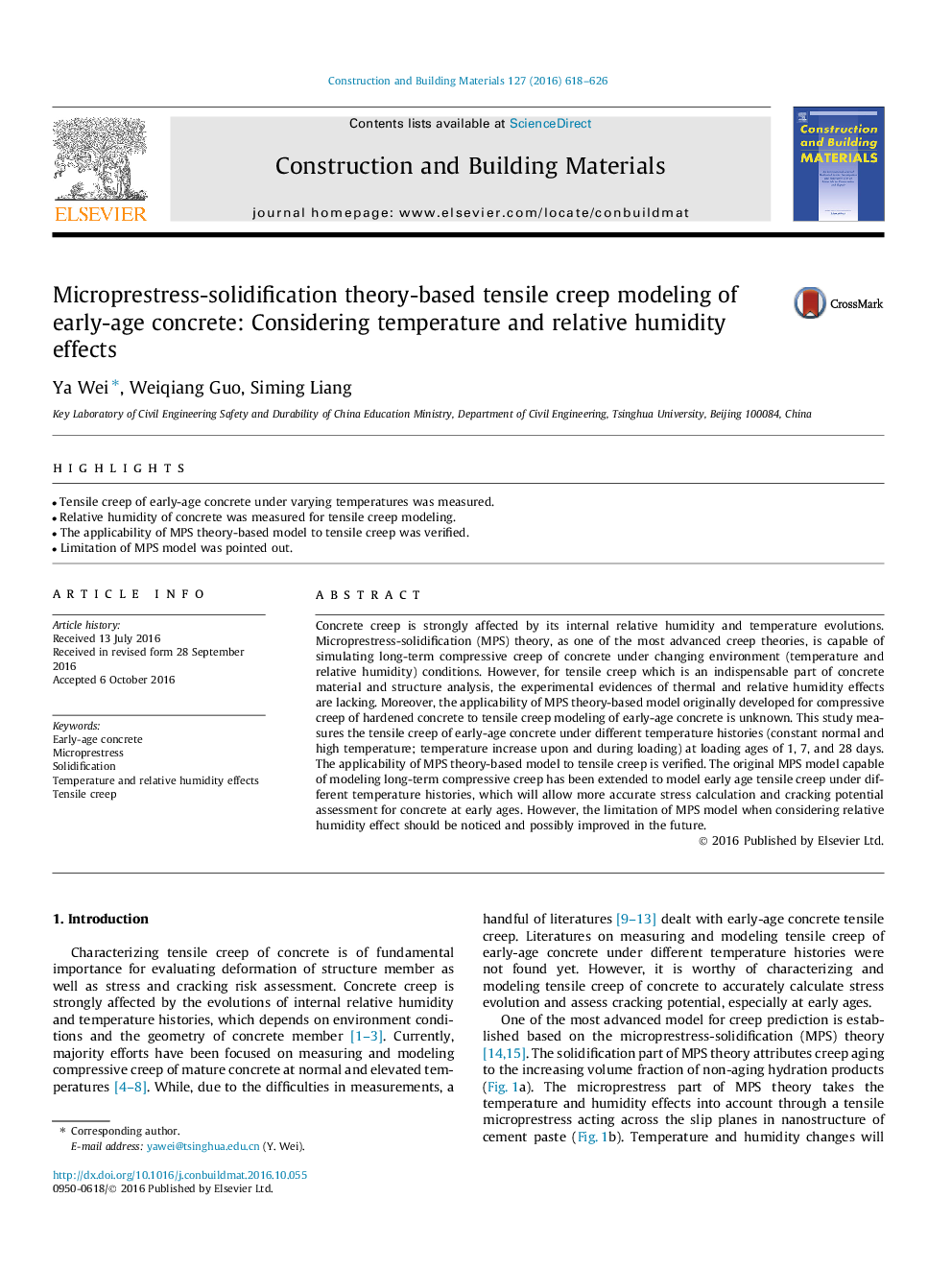| Article ID | Journal | Published Year | Pages | File Type |
|---|---|---|---|---|
| 4913975 | Construction and Building Materials | 2016 | 9 Pages |
Abstract
Concrete creep is strongly affected by its internal relative humidity and temperature evolutions. Microprestress-solidification (MPS) theory, as one of the most advanced creep theories, is capable of simulating long-term compressive creep of concrete under changing environment (temperature and relative humidity) conditions. However, for tensile creep which is an indispensable part of concrete material and structure analysis, the experimental evidences of thermal and relative humidity effects are lacking. Moreover, the applicability of MPS theory-based model originally developed for compressive creep of hardened concrete to tensile creep modeling of early-age concrete is unknown. This study measures the tensile creep of early-age concrete under different temperature histories (constant normal and high temperature; temperature increase upon and during loading) at loading ages of 1, 7, and 28 days. The applicability of MPS theory-based model to tensile creep is verified. The original MPS model capable of modeling long-term compressive creep has been extended to model early age tensile creep under different temperature histories, which will allow more accurate stress calculation and cracking potential assessment for concrete at early ages. However, the limitation of MPS model when considering relative humidity effect should be noticed and possibly improved in the future.
Related Topics
Physical Sciences and Engineering
Engineering
Civil and Structural Engineering
Authors
Ya Wei, Weiqiang Guo, Siming Liang,
